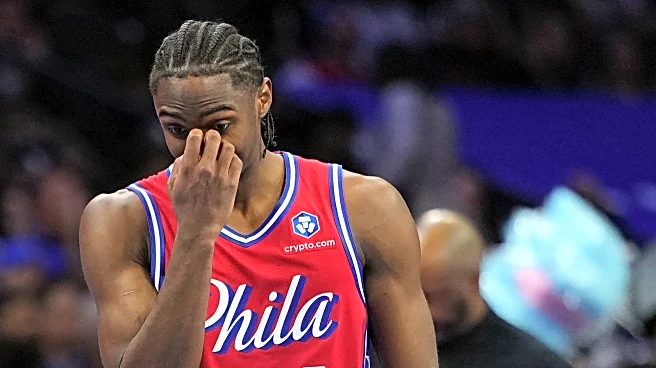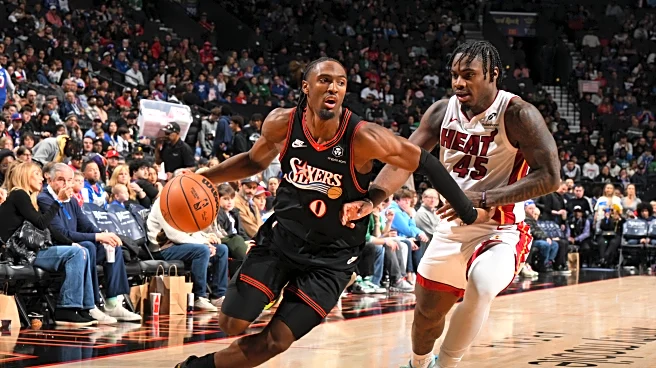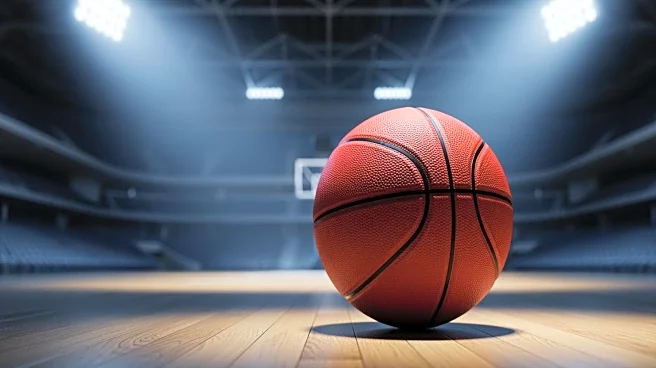Well, it’s Groundhog Day again. Or, at least, it certainly feels like it.
The Philadelphia 76ers suffered their worst defeat of the early season on Tuesday night in front of a home crowd, falling 144-103 to the Orlando Magic in an NBA Cup game. Honestly, the score makes it sound somehow closer than it actually was. It was just a massacre — a morally debilitating one, at that.
The Sixers were without Joel Embiid (right knee), Paul George (ankle), VJ Edgecombe (calf soreness), Adem Bona (ankle), and
Kelly Oubre Jr. (knee). They lost Trendon Watford to a left adductor strain that forced him to exit the contest in the second period.
It was ugly early and somehow only got uglier as the night went on. It was just one game, yes, but it was symptomatic of larger issues for the Sixers. With full quarters worth of slaughter to have to sit and watch, it was impossible to not ponder what got the team to this point. If you ask me, a large part of the problem is the construction of the roster itself — a familiar issue for the Sixers organization and Daryl Morey.
Now, we have to be realistic: in defense of the Sixers, there is probably not a team in the league that is prepared to play well or very efficiently with six rotation players unavailable. Having that many injuries hit at once is plainly unlucky, and not being ready to excel under those circumstances is totally fair.
However, I’d be willing to argue there are teams at least a bit more prepared than the Sixers are for when crap hits the fan — something this organization should be planning ahead for at this point.
The NBA allows teams 15 standard roster spots and three two-way slots. Two-way slots are occupied by players with four or fewer years of experience to split their time between the NBA and G League. They are limited to participating in a maximum of 50 NBA contests under such contracts. Let’s keep that in mind as we go through this.
The Sixers have two players, Joel Embiid and Paul George, on massive contracts with the basic knowledge that they will not be playing every game this season. In the case of Embiid, it would be considered pretty damn optimistic to expect for him to even play half of the games. Because of those contracts, though, there’s really nothing that could be done here, so let’s put them aside for now.
Kyle Lowry, now just four months removed from his 40th birthday, was widely assumed to be taking on more of a player-coach role when he was signed to come back to Philadelphia for his 20th season in the NBA. For the veteran leadership and coaching for the younger guys on the squad alone, his presence is certainly not a negative by any means.
I think most, however, might have assumed there would be at least a little bit of the “player” part of player-coach too! In Tuesday night’s slaughtering of the Sixers, Lowry never touched the floor. Down 40 points with Philadelphia down to it’s last few healthy legs, Lowry was never subbed in. Do I think Lowry playing would have at all changed the outcome to the game? No. Let me be very clear on that. However, I think it was the exact situation you would expect to see the veteran sub in and play a few minutes just to get the team to the final buzzer. Him not even taking the floor under those circumstances says to me that Lowry will not be playing really at all.
Another standard roster spot is occupied by Eric Gordon, another league veteran that is approaching his 37th birthday in December. Gordon has been used extremely sparsely so far and with widely varying results, mostly in the negative.
So, factoring in Lowry and Gordon leaves the Sixers with just 13 standard spots to field a sustainable team. Two of those spots are occupied by the unreliable availability of Embiid and George, which we touched on earlier. Down to 11 spots.
The Sixers also currently have an open roster spot. Yes, they have just 14 of 15 filled. Why would they do that, you might ask? Well, not filling that final roster spot means one less player contract hitting the cap, saving the team money and ultimately making it easier to duck the luxury tax at the trade deadline, something they also did last season. The organization could try to argue that leaving that spot open is in the interest of flexibility to eventually convert the two-way contract of Dominick Barlow or Jabari Walker to a standard one without having to make a corresponding cut somewhere. I would personally be a bit skeptical of that explanation, though, due in part to the Sixers making the effort to dodge the luxury tax last season and in part because I’d argue it’s undeniable that the worth of having someone available to play in that spot now would be worth more than any perceived future flexibility.
Regardless, the spot remains unfilled as of now… so we’re down to 10 spots — just two-thirds of the standard roster spots left to put a team on the floor with some consistency in what we all know is a long 82-game season. Is there any wonder why, prior to Oubre suffering his knee injury, the Sixers had three players in the top four for average minutes per night in the league? Tyrese Maxey (39.9 minutes/game) and VJ Edgecombe (37.3) are still first and second, respectively, in the Association in such category.
This is only going to compound to make the situation even worse. When you hamstring yourself to having just two-thirds of a roster worth of players to depend on to be available every night, you are going to have those guys playing a lot of minutes. The more minutes they play, the more likely they themselves will fall victim to issues that will affect their availability, hamstringing the team even further. It all builds on itself into the perfect (shit)storm.
This organization cannot completely blame bad luck or plead ignorance like they couldn’t have seen this coming. Not after last year. My personal beliefs going into this season for the Sixers organization were that they weren’t going to be necessarily contenders in any serious way, but instead truly needed to use the year to find a way to play sustainable basketball. It wasn’t likely going to always be stellar or title-contending ball, but it had to start to become sustainable basketball that could put up some resistance and resilience, even in the face of bad luck. You know, the opposite of last season.
Tuesday night felt like… well, last season. It was nearly impossible to deny that sick feeling of “damn, here we really go again.”
With this roster construction, though, maybe it’s what we should have expected all along.














